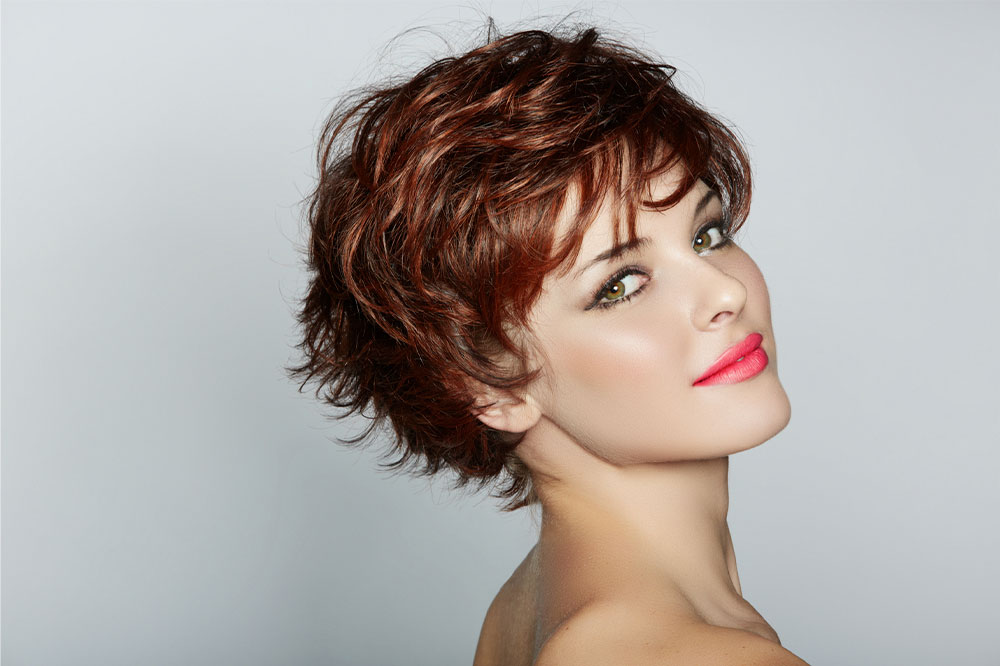14 best hairstyles for short hair

Have you ever felt like chopping off your hair? Well, you are not alone. Many women do so, considering how hassle-free and manageable short hair is, and don’t forget, it looks incredible too, and they are one of the top-trending hairstyles of 2022. So, if you wish to bring some significant changes this year, why not start with a new hairstyle? Here are some top trending hairstyles for short hair you can try this year:
Layered lob
Long lobs or bobs have created a rage for the past few years. And why not? They are not only stylish but also effortlessly customizable. The bangs and layers can be styled and adjusted in many ways. Besides, the added layers can also maintain your hair’s natural texture. Consequently, you have a haircut that doesn’t look forced on your face.
Curtain bangs
Pair your collar-length bob with curtain bangs, and you have your match made in heaven. Besides, your bob will find the most low-maintenance partner in curtain bangs. They are not only incredibly versatile but also easily manageable. They are sufficiently long to let loose for a casual look or pin back for a formal appearance. You can also cut them down for a shorter appearance. Curtain bangs are just the style for you if you are not that committed regarding your haircuts.
Strong bob
Also known as blunt bob, strong bobs are one the most trending haircuts this year. They not only define the term “style statement” but also set the stage for the ascendancy of ‘cool’ over ‘sexy.’ When it comes to a strong bob, your hair texture does not matter. They can look good on anyone. However, if you have a dense hair texture, ensure that your stylist makes it thin first.
Soft modern shag
This softer version of the modern shag adds composite layers to the original cut’s flippy, short bangs and ends. However, ensure to proceed with a side part as that would increase the versatility of this hairstyle, making it suitable for all types of face shapes.
Classic bobs
When it comes to classic bobs, you can never go wrong. They are so versatile that women with any face shape can try them out. However, its face-framing, minimal layers look the best on women with wavy and straight hair. If you have curly hair, ensure that your stylist adds more layers to them.
Curly super pixie
If you have tight curls, this is a hairstyle you must try. The super short pixie throws entirely new light on your hair texture. It hardly requires any amount of diffusing, which is something every curly-haired woman dreams of night and day.
Sharp pixie
If you want sophistication and edginess simultaneously, you must try this hairstyle’s sharp angles. Besides, shorter hairstyles are the best for maintaining fine hair as the shorter strands tend to be more potent than longer strands. When it comes to Pixie cuts, they anyway epitomize sophistication. However, pairing them with an angled undercut can make you look more stunning and edgy. Furthermore, they look great in photographs.
Sculpted crop
If you have straight hair, consider this hairdo one of the perfect choices. It is sophisticated and sleek. Besides, the heavy curve on the crown can complement your personality and make you look stylish.
Full bangs
When it comes to flexibility and versatility, there is no match for full bangs. Try them with any haircut, lob, bob, medium, or long hair. They will blend themselves to shine a new light on your hairdo.
Medium length side-swept
This soft hairdo will make you look more feminine if you possess a medium to thick hair texture. Besides, your high cheekbones will get further enhanced with tender face-framing tendrils.
Super pixie
Consider this classic pixie cut a god’s gift if you wish to eliminate your long tendrils. This ultra-short haircut looks good on any hair texture. However, it works the best on straight, thick hair. Apply a small amount of pomade, and you will have the perfect lift to your bangs.
Choppy pixie
Want to upgrade your classy pixie look? Try these choppy layers. You can combine them with side-swept bangs to make this classic hairdo sassier.
Elongated layered pixie
This hairdo is a go-to-option for those with thin, fine hair. Why? Well, this haircut has the magical powers to make your fine hair appear thicker. With those elongated layers, your crown receives an added texture and volume, making it the ideal short hairdo for fine, thin hair. Besides, it looks classic and is effortless to manage.
Shaggy bob
This is just another classic hairstyle for those with fine thin hair. With a short back cut and highlighted and long sides and front, this hairstyle is one of the top trending hairstyles of this year. Besides, the shadowy roots add instant volume to the crown making your hair look thick.
Conclusion
As far as short hair is concerned, they are no shortage of options. If you want to let loose this year, leave all your apprehensions and run to the salon to get rid of those heavy, long strands. However, do not forget to take note of the shape of your face and hair texture. Your new hairstyle must not look forced on your personality.



